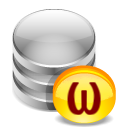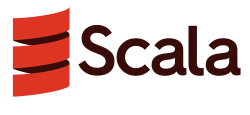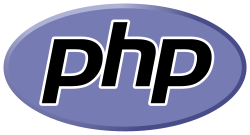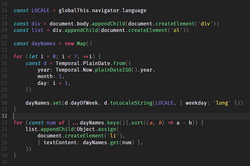Portal:Computer programming
Portal maintenance status: (September 2019)
|
The Computer Programming Portal
Computer programming or coding is the composition of sequences of instructions, called programs, that computers can follow to perform tasks. It involves designing and implementing algorithms, step-by-step specifications of procedures, by writing code in one or more programming languages. Programmers typically use high-level programming languages that are more easily intelligible to humans than machine code, which is directly executed by the central processing unit. Proficient programming usually requires expertise in several different subjects, including knowledge of the application ___domain, details of programming languages and generic code libraries, specialized algorithms, and formal logic.
Auxiliary tasks accompanying and related to programming include analyzing requirements, testing, debugging (investigating and fixing problems), implementation of build systems, and management of derived artifacts, such as programs' machine code. While these are sometimes considered programming, often the term software development is used for this larger overall process – with the terms programming, implementation, and coding reserved for the writing and editing of code per se. Sometimes software development is known as software engineering, especially when it employs formal methods or follows an engineering design process. (Full article...)
Selected articles - load new batch
-
Image 1In the C++ programming language,
decltypeis a keyword used to query the type of an expression. Introduced in C++11, its primary intended use is in generic programming, where it is often difficult, or even impossible, to express types that depend on template parameters.
As generic programming techniques became increasingly popular throughout the 1990s, the need for a type-deduction mechanism was recognized. Many compiler vendors implemented their own versions of the operator, typically calledtypeof, and some portable implementations with limited functionality, based on existing language features were developed. In 2002, Bjarne Stroustrup proposed that a standardized version of the operator be added to the C++ language, and suggested the name "decltype", to reflect that the operator would yield the "declared type" of an expression.decltype's semantics were designed to cater to both generic library writers and novice programmers. In general, the deduced type matches the type of the object or function exactly as declared in the source code. Like thesizeofoperator,decltype's operand is not evaluated. (Full article...) -
Image 2
MATLAB (Matrix Laboratory) is a proprietary multi-paradigm programming language and numeric computing environment developed by MathWorks. MATLAB allows matrix manipulations, plotting of functions and data, implementation of algorithms, creation of user interfaces, and interfacing with programs written in other languages.
Although MATLAB is intended primarily for numeric computing, an optional toolbox uses the MuPAD symbolic engine allowing access to symbolic computing abilities. An additional package, Simulink, adds graphical multi-___domain simulation and model-based design for dynamic and embedded systems.
As of 2020[update], MATLAB has more than four million users worldwide. They come from various backgrounds of engineering, science, and economics. As of 2017[update], more than 5000 global colleges and universities use MATLAB to support instruction and research. (Full article...) -
Image 3Logotype used on the cover of the first edition of The C Programming Language
C is a general-purpose programming language. It was created in the 1970s by Dennis Ritchie and remains widely used and influential. By design, C gives the programmer relatively direct access to the features of the typical CPU architecture, customized for the target instruction set. It has been and continues to be used to implement operating systems (especially kernels), device drivers, and protocol stacks, but its use in application software has been decreasing. C is used on computers that range from the largest supercomputers to the smallest microcontrollers and embedded systems.
A successor to the programming language B, C was originally developed at Bell Labs by Ritchie between 1972 and 1973 to construct utilities running on Unix. It was applied to re-implementing the kernel of the Unix operating system. During the 1980s, C gradually gained popularity. It has become one of the most widely used programming languages, with C compilers available for practically all modern computer architectures and operating systems. The book The C Programming Language, co-authored by the original language designer, served for many years as the de facto standard for the language. C has been standardized since 1989 by the American National Standards Institute (ANSI) and, subsequently, jointly by the International Organization for Standardization (ISO) and the International Electrotechnical Commission (IEC).
C is an imperative procedural language, supporting structured programming, lexical variable scope, and recursion, with a static type system. It was designed to be compiled to provide low-level access to memory and language constructs that map efficiently to machine instructions, all with minimal runtime support. Despite its low-level capabilities, the language was designed to encourage cross-platform programming. A standards-compliant C program written with portability in mind can be compiled for a wide variety of computer platforms and operating systems with few changes to its source code. (Full article...) -
Image 4

Tcl (pronounced "tickle" or "TCL"; originally Tool Command Language) is a high-level, general-purpose, interpreted, dynamic programming language. It was designed with the goal of being very simple but powerful. Tcl casts everything into the mold of a command, even programming constructs like variable assignment and procedure definition. Tcl supports multiple programming paradigms, including object-oriented, imperative, functional, and procedural styles.
It is commonly used embedded into C applications, for rapid prototyping, scripted applications, GUIs, and testing. Tcl interpreters are available for many operating systems, allowing Tcl code to run on a wide variety of systems. Because Tcl is a very compact language, it is used on embedded systems platforms, both in its full form and in several other small-footprint versions.
The popular combination of Tcl with the Tk extension is referred to as Tcl/Tk (pronounced "tickle teak"[citation needed] or "tickle TK") and enables building a graphical user interface (GUI) natively in Tcl. Tcl/Tk is included in the standard Python installation in the form of Tkinter. (Full article...) -
Image 5

The Greek lowercase omega (ω) character is used to represent Null in database theory.
In SQL, null or NULL is a special marker used to indicate that a data value does not exist in the database. Introduced by the creator of the relational database model, E. F. Codd, SQL null serves to fulfill the requirement that all true relational database management systems (RDBMS) support a representation of "missing information and inapplicable information". Codd also introduced the use of the lowercase Greek omega (ω) symbol to represent null in database theory. In SQL,NULLis a reserved word used to identify this marker.
A null should not be confused with a value of 0. A null indicates a lack of a value, which is not the same as a zero value. For example, consider the question "How many books does Adam own?" The answer may be "zero" (we know that he owns none) or "null" (we do not know how many he owns). In a database table, the column reporting this answer would start with no value (marked by null), and it would not be updated with the value zero until it is ascertained that Adam owns no books.
In SQL, null is a marker, not a value. This usage is quite different from most programming languages, where a null value of a reference means it is not pointing to any object. (Full article...) -
Image 6Forth is a stack-oriented programming language and interactive integrated development environment designed by Charles H. "Chuck" Moore and first used by other programmers in 1970.
Although not an acronym, the language's name in its early years was often spelled in all capital letters as FORTH.
The FORTH-79 and FORTH-83 implementations, which were not written by Moore, became de facto standards, and an official technical standard of the language was published in 1994 as ANS Forth.
A wide range of Forth derivatives existed before and after ANS Forth.
The free and open-source software Gforth implementation is actively maintained, as are several commercially supported systems.
Forth typically combines a compiler with an integrated command shell, where the user interacts via subroutines called words.
Words can be defined, tested, redefined, and debugged without recompiling or restarting the whole program. All syntactic elements, including variables, operators, and control flow, are defined as words. A stack is used to pass parameters between words, leading to a Reverse Polish notation style. (Full article...) -
Image 7

Scala (/ˈskɑːlɑː/ SKAH-lah) is a strongly statically typed high-level general-purpose programming language that supports both object-oriented programming and functional programming. Designed to be concise, many of Scala's design decisions are intended to address criticisms of Java.
Scala source code can be compiled to Java bytecode and run on a Java virtual machine (JVM). Scala can also be transpiled to JavaScript to run in a browser, or compiled directly to a native executable. When running on the JVM, Scala provides language interoperability with Java so that libraries written in either language may be referenced directly in Scala or Java code. Like Java, Scala is object-oriented, and uses a syntax termed curly-brace which is similar to the language C. Since Scala 3, there is also an option to use the off-side rule (indenting) to structure blocks, and its use is advised. Martin Odersky has said that this turned out to be the most productive change introduced in Scala 3.
Unlike Java, Scala has many features of functional programming languages (like Scheme, Standard ML, and Haskell), including currying, immutability, lazy evaluation, and pattern matching. It also has an advanced type system supporting algebraic data types, covariance and contravariance, higher-order types (but not higher-rank types), anonymous types, operator overloading, optional parameters, named parameters, raw strings, and an experimental exception-only version of algebraic effects that can be seen as a more powerful version of Java's checked exceptions. (Full article...) -
Image 8Java is a high-level, general-purpose, memory-safe, object-oriented programming language. It is intended to let programmers write once, run anywhere (WORA), meaning that compiled Java code can run on all platforms that support Java without the need to recompile. Java applications are typically compiled to bytecode that can run on any Java virtual machine (JVM) regardless of the underlying computer architecture. The syntax of Java is similar to C and C++, but has fewer low-level facilities than either of them. The Java runtime provides dynamic capabilities (such as reflection and runtime code modification) that are typically not available in traditional compiled languages.
Java gained popularity shortly after its release, and has been a popular programming language since then. Java was the third most popular programming language in 2022[update] according to GitHub. Although still widely popular, there has been a gradual decline in use of Java in recent years with other languages using JVM gaining popularity.
Java was designed by James Gosling at Sun Microsystems. It was released in May 1995 as a core component of Sun's Java platform. The original and reference implementation Java compilers, virtual machines, and class libraries were released by Sun under proprietary licenses. As of May 2007, in compliance with the specifications of the Java Community Process, Sun had relicensed most of its Java technologies under the GPL-2.0-only license. Oracle, which bought Sun in 2010, offers its own HotSpot Java Virtual Machine. However, the official reference implementation is the OpenJDK JVM, which is open-source software used by most developers and is the default JVM for almost all Linux distributions. (Full article...) -
Image 9

R is a programming language for statistical computing and data visualization. It has been widely adopted in the fields of data mining, bioinformatics, data analysis, and data science.
The core R language is extended by a large number of software packages, which contain reusable code, documentation, and sample data. Some of the most popular R packages are in the tidyverse collection, which enhances functionality for visualizing, transforming, and modelling data, as well as improves the ease of programming (according to the authors and users).
R is free and open-source software distributed under the GNU General Public License. The language is implemented primarily in C, Fortran, and R itself. Precompiled executables are available for the major operating systems (including Linux, MacOS, and Microsoft Windows). (Full article...) -
Image 10
JavaScript (JS) is a programming language and core technology of the web platform, alongside HTML and CSS. Ninety-nine percent of websites on the World Wide Web use JavaScript on the client side for webpage behavior.
Web browsers have a dedicated JavaScript engine that executes the client code. These engines are also utilized in some servers and a variety of apps. The most popular runtime system for non-browser usage is Node.js.
JavaScript is a high-level, often just-in-time–compiled language that conforms to the ECMAScript standard. It has dynamic typing, prototype-based object-orientation, and first-class functions. It is multi-paradigm, supporting event-driven, functional, and imperative programming styles. It has application programming interfaces (APIs) for working with text, dates, regular expressions, standard data structures, and the Document Object Model (DOM). (Full article...) -
Image 11

Rust is a general-purpose programming language. It is noted for its emphasis on performance, type safety, concurrency, and memory safety.
Rust supports multiple programming paradigms. It was influenced by ideas from functional programming, including immutability, higher-order functions, algebraic data types, and pattern matching. It also supports object-oriented programming via structs, enums, traits, and methods. Rust is noted for enforcing memory safety (i.e., that all references point to valid memory) without a conventional garbage collector; instead, memory safety errors and data races are prevented by the "borrow checker", which tracks the object lifetime of references at compile time.
Software developer Graydon Hoare created Rust in 2006 while working at Mozilla Research, which officially sponsored the project in 2009. The first stable release, Rust 1.0, was published in May 2015. Following a layoff of Mozilla employees in August 2020, four other companies joined Mozilla in sponsoring Rust through the creation of the Rust Foundation in February 2021. (Full article...) -
Image 12

PHP is a general-purpose scripting language geared towards web development. It was originally created by Danish-Canadian programmer Rasmus Lerdorf in 1993 and released in 1995. The PHP reference implementation is now produced by the PHP Group. PHP was originally an abbreviation of Personal Home Page, but it now stands for the recursive backronym PHP: Hypertext Preprocessor.
PHP code is usually processed on a web server by a PHP interpreter implemented as a module, a daemon or a Common Gateway Interface (CGI) executable. On a web server, the result of the interpreted and executed PHP code—which may be any type of data, such as generated HTML or binary image data—would form the whole or part of an HTTP response. Various web template systems, web content management systems, and web frameworks exist that can be employed to orchestrate or facilitate the generation of that response. Additionally, PHP can be used for many programming tasks outside the web context, such as standalone graphical applications and drone control. PHP code can also be directly executed from the command line.
The standard PHP interpreter, powered by the Zend Engine, is free software released under the PHP License. PHP has been widely ported and can be deployed on most web servers on a variety of operating systems and platforms. (Full article...) -
Image 13

Logo since August 17, 2012
Microsoft is a multinational computer technology corporation. Microsoft was founded on April 4, 1975, by Bill Gates and Paul Allen in Albuquerque, New Mexico. Its current best-selling products are the Microsoft Windows operating system; Microsoft Office, a suite of productivity software; Xbox, a line of entertainment of games, music, and video; Bing, a line of search engines; and Microsoft Azure, a cloud services platform.
In 1980, Microsoft formed a partnership with IBM to bundle Microsoft's operating system with IBM computers; with that deal, IBM paid Microsoft a royalty for every sale. In 1985, IBM requested Microsoft to develop a new operating system for their computers called OS/2. Microsoft produced that operating system, but also continued to sell their own alternative, which proved to be in direct competition with OS/2. Microsoft Windows eventually overshadowed OS/2 in terms of sales. When Microsoft launched several versions of Microsoft Windows in the 1990s, they had captured over 90% market share of the world's personal computers.
As of June 30, 2015, Microsoft has a global annual revenue of US$86.83 billion (~$109 billion in 2023) and 128,076 employees worldwide. It develops, manufactures, licenses, and supports a wide range of software products for computing devices. (Full article...) -
Image 14Mya was an intelligent personal assistant under development by Motorola. Proposed features for the program included the ability to read emails and answer questions 24 hours a day. Mya was intended to work with an internet service Motorola was developing called Myosphere, and was planned to be a paid service that would eventually be used by other mobile carriers. A female computer-generated character was created to represent Mya in advertising. While the quality of the character's animation was praised, it received criticism for being over sexualised.
Both the character and the program were announced to the public via an advertisement in March 2000, though the program was not ready for use at that time. Despite the announcement generating a considerable amount of attention, little was heard regarding the project in subsequent months. The program was never officially released nor cancelled, though the trademarks for both Myosphere and Mya were abandoned by Motorola in 2002. The name Mya was believed to be a play on the words 'My assistant'. (Full article...) -
Image 15

Source code for a computer program written in the JavaScript language. It demonstrates the appendChild method. The method adds a new child node to an existing parent node. It is commonly used to dynamically modify the structure of an HTML document.
A computer program is a sequence or set of instructions in a programming language for a computer to execute. It is one component of software, which also includes documentation and other intangible components.
A computer program in its human-readable form is called source code. Source code needs another computer program to execute because computers can only execute their native machine instructions. Therefore, source code may be translated to machine instructions using a compiler written for the language. (Assembly language programs are translated using an assembler.) The resulting file is called an executable. Alternatively, source code may execute within an interpreter written for the language.
If the executable is requested for execution, then the operating system loads it into memory and starts a process. The central processing unit will soon switch to this process so it can fetch, decode, and then execute each machine instruction. (Full article...)
Selected images
-
Image 1A lone house. An image made using Blender 3D.
-
Image 2Stephen Wolfram is a British-American computer scientist, physicist, and businessman. He is known for his work in computer science, mathematics, and in theoretical physics.
-
Image 3Ada Lovelace was an English mathematician and writer, chiefly known for her work on Charles Babbage's proposed mechanical general-purpose computer, the Analytical Engine. She was the first to recognize that the machine had applications beyond pure calculation, and to have published the first algorithm intended to be carried out by such a machine. As a result, she is often regarded as the first computer programmer.
-
Image 4Partial view of the Mandelbrot set. Step 1 of a zoom sequence: Gap between the "head" and the "body" also called the "seahorse valley".
-
Image 5Output from a (linearised) shallow water equation model of water in a bathtub. The water experiences 5 splashes which generate surface gravity waves that propagate away from the splash locations and reflect off of the bathtub walls.
-
Image 6An IBM Port-A-Punch punched card
-
Image 7Margaret Hamilton standing next to the navigation software that she and her MIT team produced for the Apollo Project.
-
Image 10Partial map of the Internet based on the January 15, 2005 data found on opte.org. Each line is drawn between two nodes, representing two IP addresses. The length of the lines are indicative of the delay between those two nodes. This graph represents less than 30% of the Class C networks reachable by the data collection program in early 2005.
-
Image 11GNOME Shell, GNOME Clocks, Evince, gThumb and GNOME Files at version 3.30, in a dark theme
-
Image 12Deep Blue was a chess-playing expert system run on a unique purpose-built IBM supercomputer. It was the first computer to win a game, and the first to win a match, against a reigning world champion under regular time controls. Photo taken at the Computer History Museum.
-
Image 13This image (when viewed in full size, 1000 pixels wide) contains 1 million pixels, each of a different color.
-
Image 14A view of the GNU nano Text editor version 6.0
-
Image 16Grace Hopper at the UNIVAC keyboard, c. 1960. Grace Brewster Murray: American mathematician and rear admiral in the U.S. Navy who was a pioneer in developing computer technology, helping to devise UNIVAC I. the first commercial electronic computer, and naval applications for COBOL (common-business-oriented language).
-
Image 18A head crash on a modern hard disk drive
Did you know? - load more entries

- ... that the 2024 psychological horror game Mouthwashing utilises non-diegetic scene transitions that mimic glitches and crashes?
- ... that NATO was once targeted by a group of "gay furry hackers"?
- ... that the Gale–Shapley algorithm was used to assign medical students to residencies long before its publication by Gale and Shapley?
- ... that it took a particle accelerator and machine-learning algorithms to extract the charred text of PHerc. Paris. 4 without unrolling it?
- ... that the study of selection algorithms has been traced to an 1883 work of Lewis Carroll on how to award second place in single-elimination tournaments?
- ... that Cornell University's student-oriented programming language dialect was made available to other universities but required a "research grant" payment in exchange?
Subcategories
WikiProjects
- There are many users interested in computer programming, join them.
Computer programming news
No recent news






























